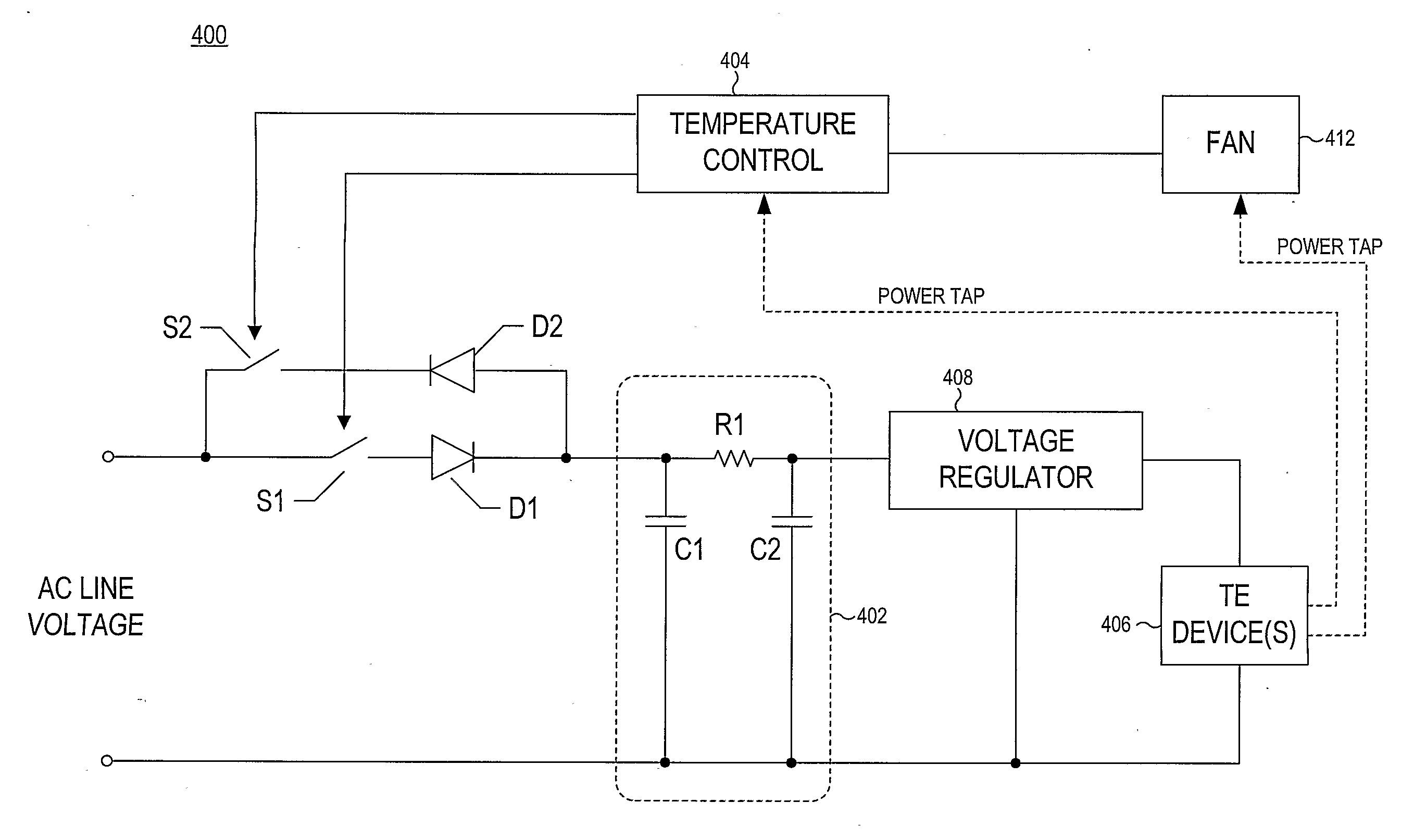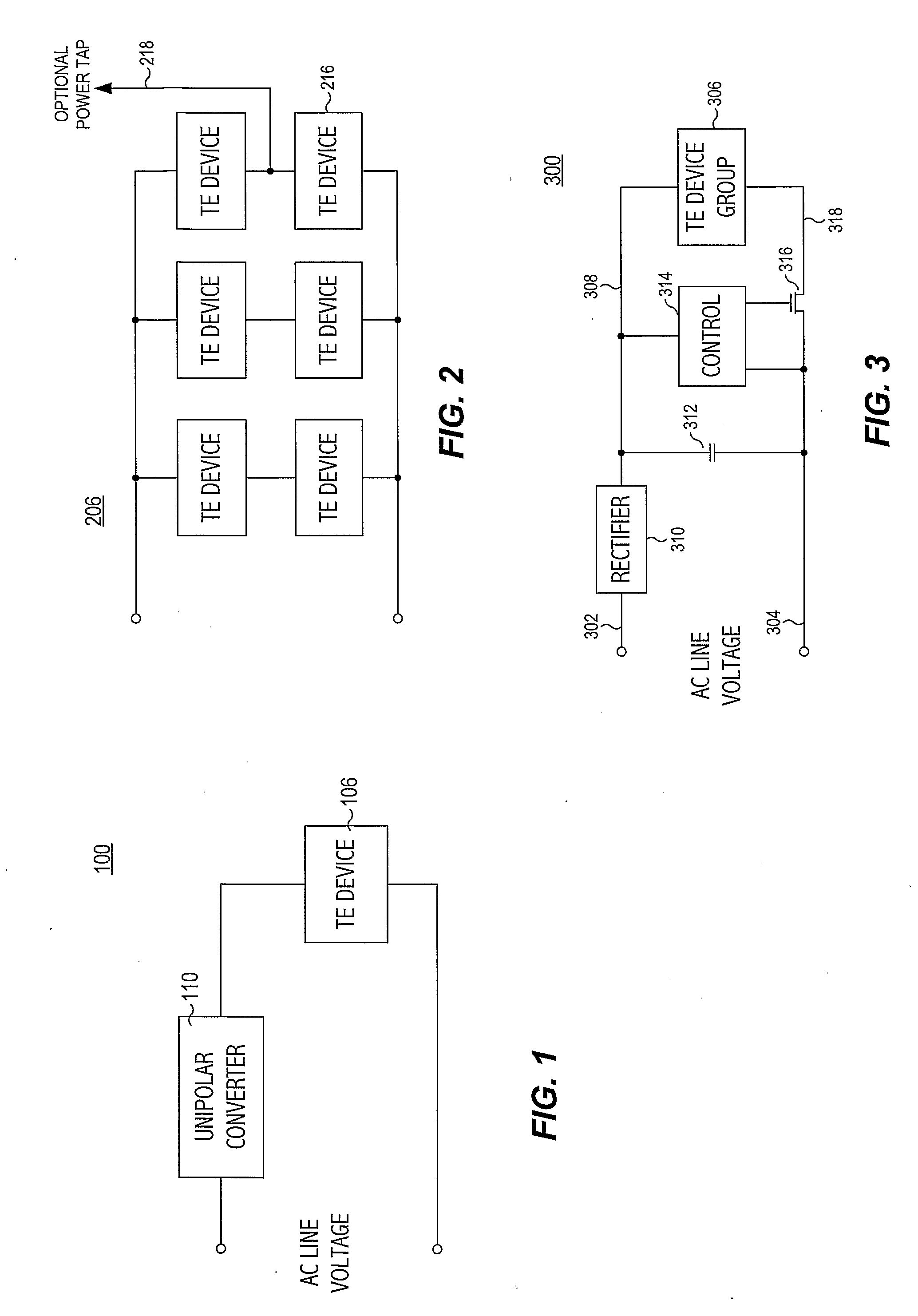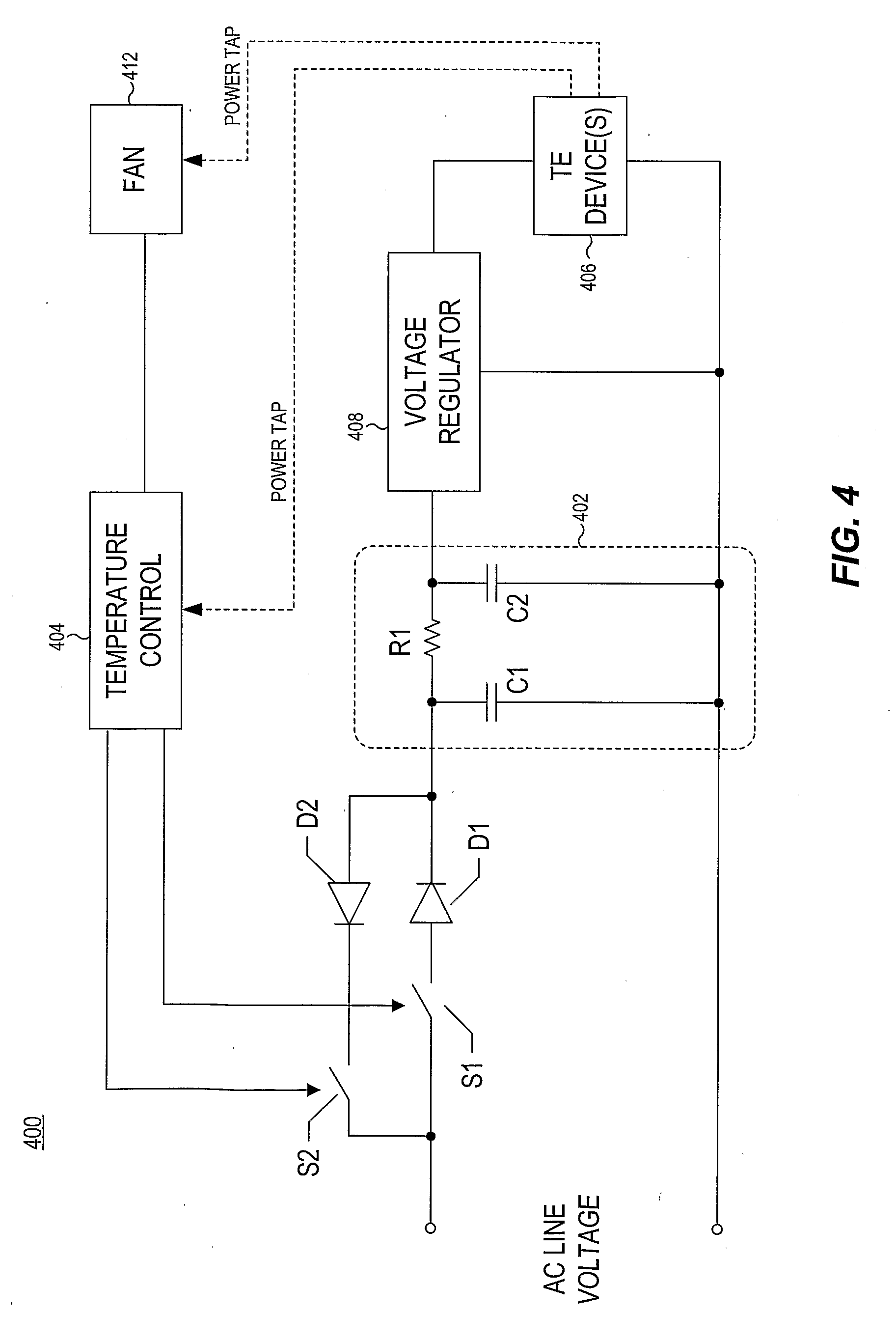[0004]Cooling / heating systems utilizing traditional bulk thermoelectric devices (TEDs) typically include a fairly limited number of series-connected thermoelectric devices, and thus require fairly low operating voltages, and utilize power supply subsystems which are capable of generating a fairly
low voltage /
high current DC output. Such power supplies frequently include a large
transformer,
high current switching devices, and a wiring harness, in addition to other supporting components. For example, such a power supply might be configured to provide a maximum voltage of about 15 VDC with a maximum current of about 6 A. Such power supply subsystems have increased the cost and weight and reduced the reliability of such thermoelectric systems.
[0005]Recently, thermoelectrics have been manufactured based on thin-film materials and
wafer-scale
integrated circuit (IC)
processing. Using IC
processing techniques has facilitated smaller thermoelectric feature sizes which provide higher densities and smaller form factors. hi addition, TEDs manufactured in this manner do not use solder to interconnect the thermoelectric elements, as interconnects are achieved using standard IC metal
lithography processes. As such, the reliability of a TED employing thin-film thermoelectric structures is generally increased. Smaller, higher-density TEDs also provide several commercial benefits over traditional bulk TEDs. For example, thin-film TEDs exhibit improvements in performance (improved power efficiency, lower cooling / heating times, and better
temperature control), reduction in size, and improved reliability as compared to traditional bulk thermoelectrics.
[0006]Scaling TEDs to sizes is desirable for several reasons. For example, in a cooling application, the cooling density of a
thermoelectric element is inversely proportional to the
electrical length of the
thermoelectric element. By scaling to smaller geometries, higher cooling densities can be achieved, which allow for cooling the same
heat load within a smaller area or, conversely, higher cooling capacities using the same space. Higher cooling densities can also allow for more rapid cooling and better
temperature control in various applications. The use of thin-film materials allows the length of a
thermoelectric element to be scaled from millimeters down to microns. For example, thin-film thermoelectrics may be manufactured that integrate 1,000 to 16,000 or more thermoelectric “couples” (i.e., complementary pairs of TE elements) per
square centimeter.
[0007]In addition to the above-enumerated advantages, there remains a heretofore unappreciated benefit of inexpensively being able to integrate a large number of thermoelectric elements (e.g., such as by using
wafer-scale
integrated circuit processing). By integrating a large number of thermoelectric couples, which are interconnected as a result of such IC processing, a thermoelectric device may be fabricated which can operate using a much higher voltage than before. Moreover, the current required by such a device incorporating large numbers of series-connected thermoelectric couples may be much lower than previous devices, and yet still achieve the same cooling capability. For example, thin-film TEDs may be achieved that are capable of withstanding voltages of 300 V or more (yet still providing good
thermal conductivity), while operating at relatively low currents, e.g., 0.5 A.
[0008]Because of the large number of such series connected thermoelectric elements required to operate using such high voltages, and due to the high cost and lower reliability of TEDs incorporating such large numbers of thermoelectric elements manufactured using “pick-and-place” technology, the wide availability of power supply circuits providing
low voltage, high current outputs, and the historical high cost of thermoelectric devices, it has never before been contemplated to use a line voltage
signal to operate a TED. Instead, such systems have previously used power supply systems having transformers and / or other
magnetic components which have generally increased the size, weight, and cost of the systems. However, TED-based heating / cooling systems in accordance with the present invention are disclosed that operate directly from a line voltage
signal. This affords a reduction in the size, weight, and cost of TED-based heating / cooling systems.
[0009]Apparatus, methods, and systems are disclosed herein that can be powered directly by line voltage and that may reduce the size, weight, and cost of TED-based heating / cooling systems. In various embodiments of the present invention an apparatus is configured to include a thermoelectric device which is line voltage powered. Such TEDs allow for a reduction in the size, weight, and cost of power supply and control circuitry, which have otherwise been required to power and control traditional bulk thermoelectric devices. For example, an apparatus incorporating a thin-film TED may be designed that can operate directly from the line voltage. As such, the apparatus does not need to incorporate a relatively large, expensive
transformer to step down a line voltage. Eliminating the
transformer generally reduces the volume and weight of required
peripheral components. Further, lower operating currents (e.g., 0.5 A versus 6 A) facilitate the implementation of lower current-rated, albeit higher voltage-rated, components (e.g., rectifiers, capacitors and conductors) and lower-cost
temperature control ICs and printed circuit boards (PCBs), thus allowing for a reduction in
system cost.
 Login to View More
Login to View More  Login to View More
Login to View More 


